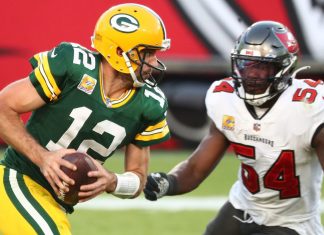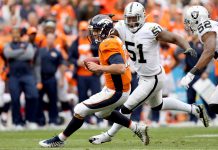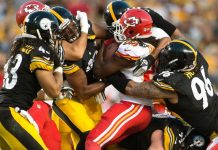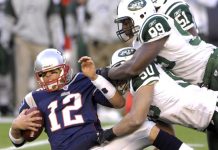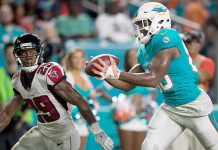PHILADELPHIA (AP) Retired NFL players seeking testing as part of a $1 billion concussion settlement must see a doctor close to home to prevent fraud and ”doctor shopping,” the federal judge overseeing the case ruled.
Lawyers for thousands of ex-players complain their clients agreed to the 2013 class-action settlement largely because they could choose their own doctors after a history of mistrust with the NFL. Their lawsuits had alleged the NFL long hid what it knew about concussion risks and brain injuries.
The new rule will require most former players to see a doctor within 150 miles (241 kilometers) or a neurologist within 200 miles (322 kilometers). The claims administrator can grant exceptions, perhaps for men living in rural areas.
Lawyers for the retirees say there aren’t enough neurologists in many parts of the country taking part in the program. And some clients hope to see subspecialists to deal with their particular medical issues.
”It’s patently unfair,” said lawyer Craig Mitnick of Haddonfield, New Jersey, on Friday. ”It’s not what their understanding was of the terms of what they were agreeing to. I think that’s problematic.”
Senior U.S. District Judge Anita B. Brody, in Philadelphia, has overseen the case since 2011, and guided the two sides toward a settlement that initially capped the NFL’s cost at $765 million over 65 years. That cap was later lifted as she grew concerned the fund would run dry far ahead of schedule.
The payouts in the two years the program has been up and running reached $500 million this month, while another $160 million in awards have been approved but not yet paid.
The plan offers more than 20,000 retired players baseline testing and compensation of up to $5 million for the most serious illnesses linked to football concussions, including Alzheimer’s, Parkinson’s, amyotrophic lateral sclerosis and deaths involving chronic traumatic encephalopathy, or CTE.
Of the 872 awards paid to date, the average is just under $575,000, according to Brown’s latest online report . They include an average of $2.4 million for ALS (36 cases); $1.2 million per death with CTE (73 cases); $610,000 for Parkinson’s disease (111); and $435,000 for Alzheimer’s disease (244 cases).
Many of those more serious – and more straightforward – claims were settled first. Now the two sides are battling over the more contested dementia diagnoses. Brody, along with claims administrator Orran Brown, has suspected some fraudulent diagnoses and ”doctor shopping” amid a flurry of dementia claims from four doctors now banned from the program.
”A few were brought to my attention where we had a lawyer from Pennsylvania and a player from Florida going to a doctor in Texas. And that was a red flag,” Brody said at a court hearing last week.
The fund paid out $46 million in claims signed by the four doctors before spotting the problem, Brown told her.
Less than 15 percent of the 1,700 dementia claims filed so far have been approved and paid. Many others are still in the evaluation process. To get a financial award, a player must receive a ”Level 2.0” or ”Level 1.5” diagnosis, when ”2” is considered moderate and ”1.0” mild.
The average award so far has been just under $800,000 for a Level 2 claim and just over $500,000 for a Level 1.5 claim.
Philadelphia lawyer Gene Locks, who represents some 1,100 retired players, urged Brody last week not to limit his clients’ choice of doctors.
”They had bad experiences with the NFL benefit program, both during their playing time and after their playing time, when they felt they were used and abused,” he said.
25% Bonus via Western Union



